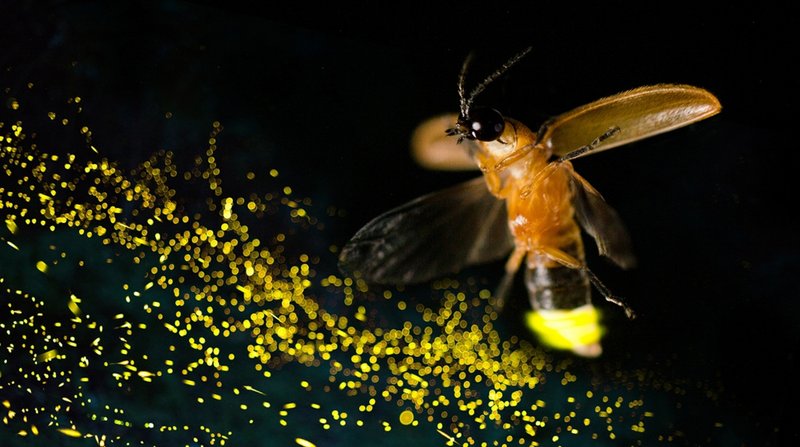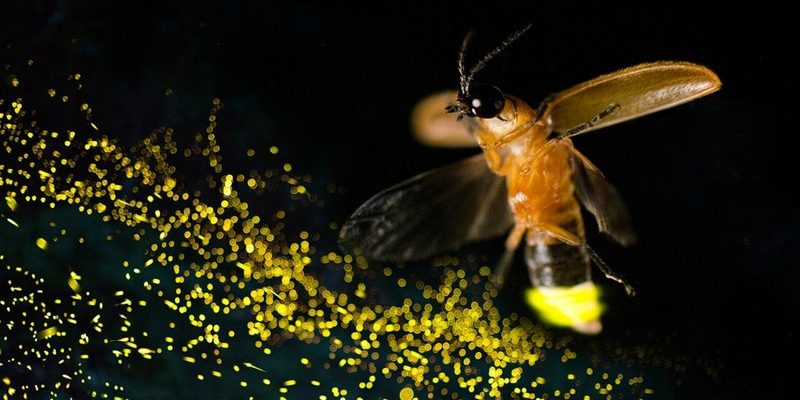
Imagine sitting under a starlit sky, watching these glowing wonders dance in the dark. When we think about fireflies, we often picture their beautiful lights flashing in the warm summer air. But there’s a lot more to their glow than just aesthetics. Scientists have embarked on a journey to uncover the secrets of bioluminescence—how fireflies produce light through a chemical reaction. Their research goes beyond curiosity; it holds potential implications in fields like medicine, environmental science, and even technology.
The Biology of Fireflies
Understanding the biology of fireflies is the first step in appreciating their glow. Fireflies belong to a group of insects called beetles. There are over 2,000 species of them around the world. They are most commonly found in tropical and temperate regions. What sets fireflies apart from other beetles is their ability to produce light.
So, how does this all work? The secret lies in a chemical called luciferin. When fireflies combine luciferin with oxygen in the presence of an enzyme called luciferase, a reaction occurs, producing light. It’s like having a mini light factory inside their bodies! The light emitted by fireflies is usually yellow, green, or even blue, depending on the species. This light is not just for show; it plays a crucial role in communication, especially during mating season.
Firefly Anatomy
Fireflies have unique anatomy that aids in their bioluminescence. Their light-producing organs are usually located in their lower abdomen. When they want to light up, they rapidly take in oxygen and mix it with luciferin in these organs. This process can happen in quick bursts, creating the characteristic flashes we see in the dark.
Interestingly, the intensity and pattern of the light can vary between species. Some fireflies flash in a rhythmic pattern, while others do it randomly. This variation helps them attract mates by sending specific signals to one another. It’s like they’re sending Morse code across the shadows!
The Chemistry of Firefly Light
When scientists dig into the chemistry behind firefly light, they uncover a world filled with fascinating reactions. The enzyme luciferase is the real star of the show here. This enzyme speeds up the reaction between luciferin and oxygen, making the light emission efficient and effective.
Research has shown that the glow of fireflies is highly efficient—almost 100% of the energy used in the reaction is converted to light, leaving minimal heat behind. This is known as “cold light.” In contrast, regular light bulbs waste a lot of energy as heat. Imagine how much energy we could save if we harnessed firefly technology! Scientists are looking at ways to mimic this process for sustainable lighting solutions.
Applications of Firefly Research
The study of fireflies isn’t just a quirky hobby for scientists; it has real-world applications. For instance, researchers are looking into how understanding bioluminescence could lead to advancements in medical imaging. By using a luciferin-like compound, doctors might be able to track biological processes in real-time, making diagnoses faster and more accurate.
Additionally, fireflies’ light-emitting abilities inspire developments in biotechnology. Scientists are creating bioengineered plants that emit light using firefly genes. This could lead to innovative lighting solutions that are eco-friendly and energy-efficient—imagine walking through a park illuminated by glowing trees!
Fireflies and Their Environment
When studying fireflies, scientists also pay attention to their environment. Fireflies thrive in moist, warm areas, typically around wetlands, meadows, and forests. Their presence indicates a healthy ecosystem, as they are sensitive to changes in their habitat.
Unfortunately, fireflies face challenges from habitat destruction, pesticides, and light pollution. These factors can significantly impact their populations. Researchers are working to understand how these environmental stressors affect fireflies and what we can do to protect them.
By understanding their behaviors and habitats, we can develop conservation strategies. Some scientists are advocating for ecological restoration efforts, encouraging communities to create firefly-friendly spaces, such as gardens filled with native plants and fewer artificial lights.
Firefly Behavior Studies
Firefly behavior is another area where scientists have focused their attention. Observing how fireflies communicate through their flashes provides insights into their mating rituals. Studies have shown that males often flash to attract females, and females respond with their own light patterns.
Researchers have even documented how different species communicate uniquely through light signals. For instance, one species might have a slow flash rate, while another flashes rapidly. Understanding these behaviors helps scientists grasp the complexities of interspecies communication. It’s like a nocturnal dance party where only the right moves will get you a partner!
Challenges in Firefly Research
Despite the exciting discoveries surrounding fireflies, research comes with its own set of challenges. One major hurdle is the decline in firefly populations worldwide. With urbanization and habitat loss, many species are becoming endangered.
Another challenge is the difficulty in observing fireflies in their natural habitat. Scientists often need to conduct field studies during specific times of the year, like the warm summer months when fireflies are most active. This timing can limit research opportunities.
Additionally, the complexity of their communication signals means that researchers must invest time in understanding each species’ unique patterns. Sorting through the data and establishing clear conclusions can be a lengthy process, requiring patience and perseverance.
Future Directions for Firefly Studies
Looking ahead, the future of firefly research is bright. Advances in technology, like genetic sequencing and remote sensing, open new doors for understanding these glowing insects. Scientists are now able to study the genetic makeup of fireflies, helping them discover how different species have adapted to their environments.
Moreover, increased public interest in firefly conservation could lead to more funding and collaborative efforts. As more people learn about the importance of these insects, there may be a greater push for educational programs and community involvement in protecting their habitats.
Understanding fireflies will not only benefit ecology but could also inspire innovations in science and technology. Who knows what we might discover next in our quest to learn about these incredible creatures?
Fireflies are more than just beautiful lights in the night sky; they are a testament to the wonders of nature and the dedication of scientists working to understand them. From their unique chemistry and biology to their cultural significance and environmental challenges, fireflies offer a treasure trove of insights. As researchers continue to study these glowing insects, we uncover new ways to appreciate and protect them.
So next time you see fireflies lighting up the evening, remember that their glow is backed by years of research and a flicker of hope for the future. Whether through conserving their habitats or mimicking their bioluminescence for sustainable technology, we can harness the beauty of fireflies to inspire a brighter tomorrow.

